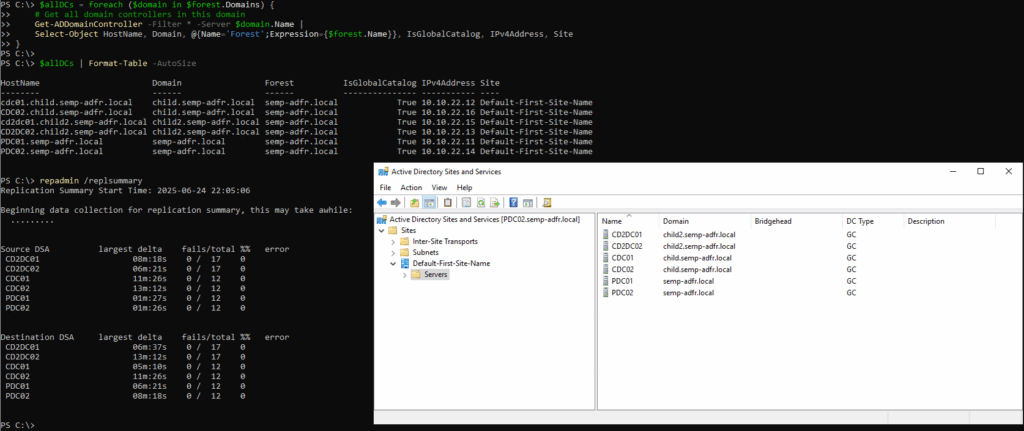The hardest part of any recovery plan is making sure you’ve accounted for every scenario and every recovery requirement. The second hardest? Keeping that plan up to date. But the most important part—without question—is testing the plan. After all, what good is a recovery plan if it’s never been tested?
An Active Directory (AD) forest recovery is one of the most complex and daunting tasks an IT professional can face, especially during a live incident. A reliable AD forest recovery solution must include automated recovery and malware-free recovery, both of which are essential for successful recovery. If you can’t ensure the AD backup you’re recovering is clean, you run the risk of simply reintroducing the malware, which further delays recovery.
What good is an Active Directory recovery plan if it’s never been tested?
Equally important is fault tolerance. Every AD recovery involves inevitable challenges. The recovery process must be able to handle unexpected issues, infrastructure failures, or network outages without bringing recovery to a halt. Fault-tolerant design isn’t optional. It’s critical to ensuring a successful recovery.
Here’s what you need to ensure AD recovery in the worst-case scenarios.
1. Ability to recover all domain controllers
Fault-tolerant recovery starts with flexible protection, ensuring the ability to recover all domain controllers (DCs)—even those not explicitly selected for backup. Semperis Active Directory Forest Recovery (ADFR) regularly monitors AD and updates the forest topology, enabling the recovery of non-backed-up DCs (Figure 1).
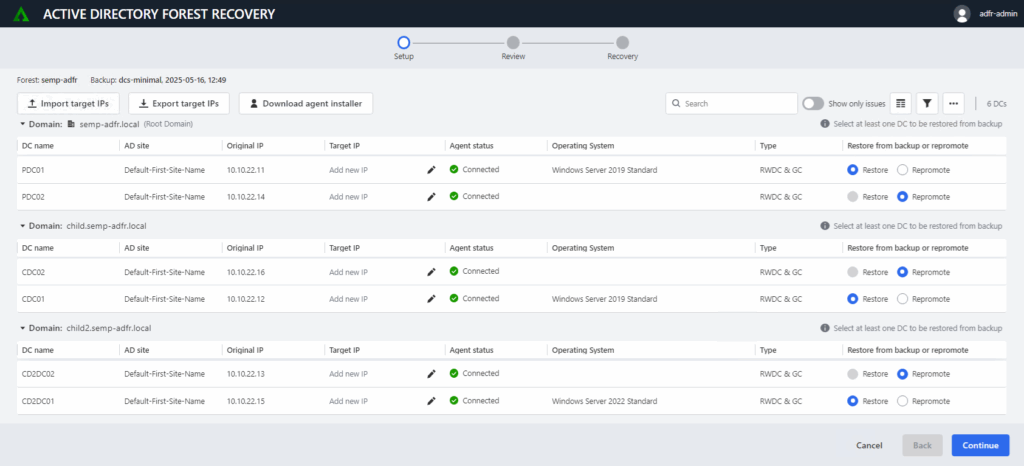
2. Recovery from anywhere to anywhere
Following the clean-source principle requires recovering to a freshly provisioned operating system. ADFR streamlines the recovery of physical servers to virtual machines, virtual servers to IaaS, and even recovery across cloud providers—from Microsoft Azure to Amazon Web Services (AWS). If it runs Windows, ADFR can recover to it.
3. Recovery to an alternate IP address space
During an AD recovery, you might need to restore DCs to a different IP address range. The original address range might be reserved for forensic analysis or could be unavailable because of infrastructure constraints. ADFR simplifies this process by enabling on-the-fly recovery to alternate IP addresses (Figure 2) and automatically updating DNS records to ensure flexibility and minimize downtime.
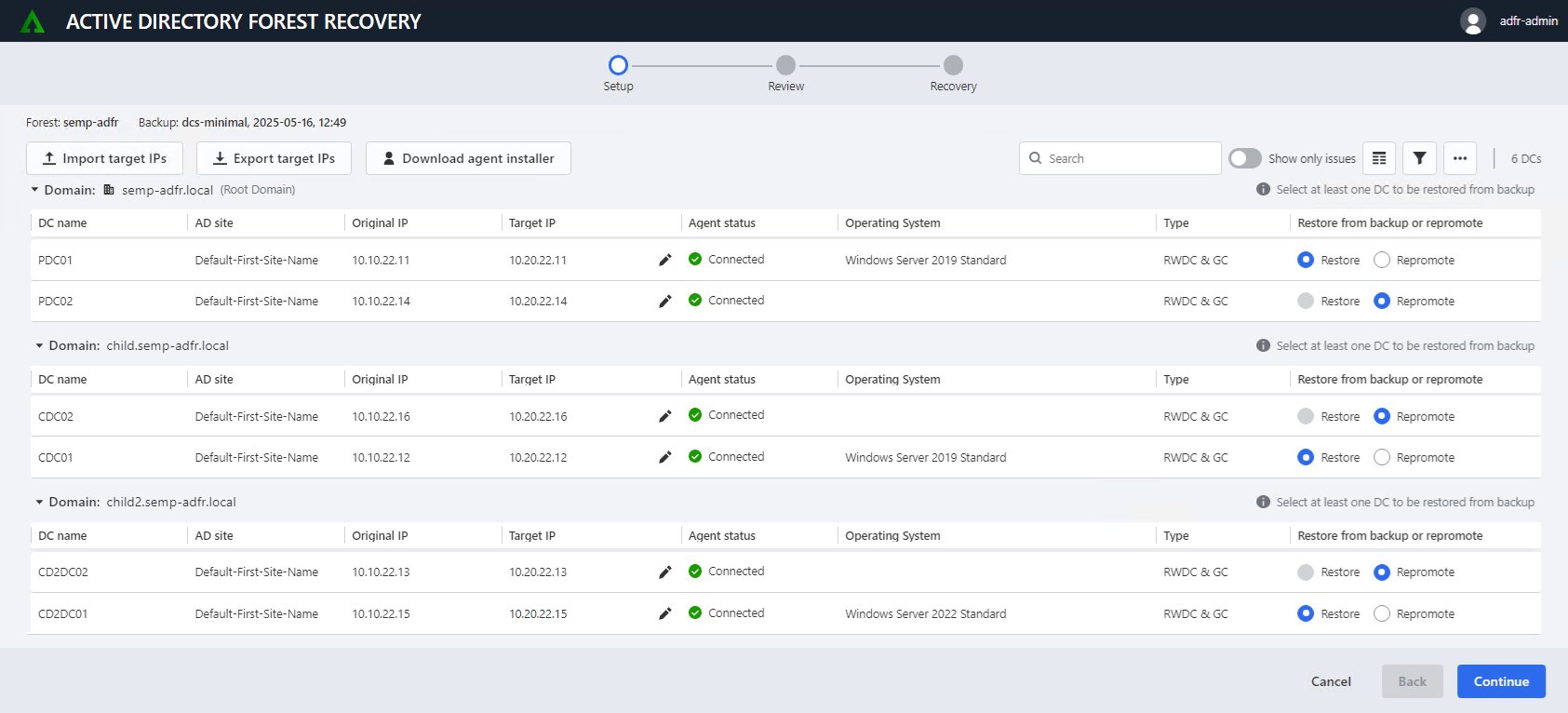
4. Flexible recovery methods
If issues arise during the recovery of a DC, the entire forest recovery process should not fail or be aborted. Instead, the solution should automatically attempt alternative recovery methods (Figure 3). If problems persist, the process should continue, allowing the problematic DC to be addressed through post-recovery troubleshooting without disrupting the overall recovery effort.
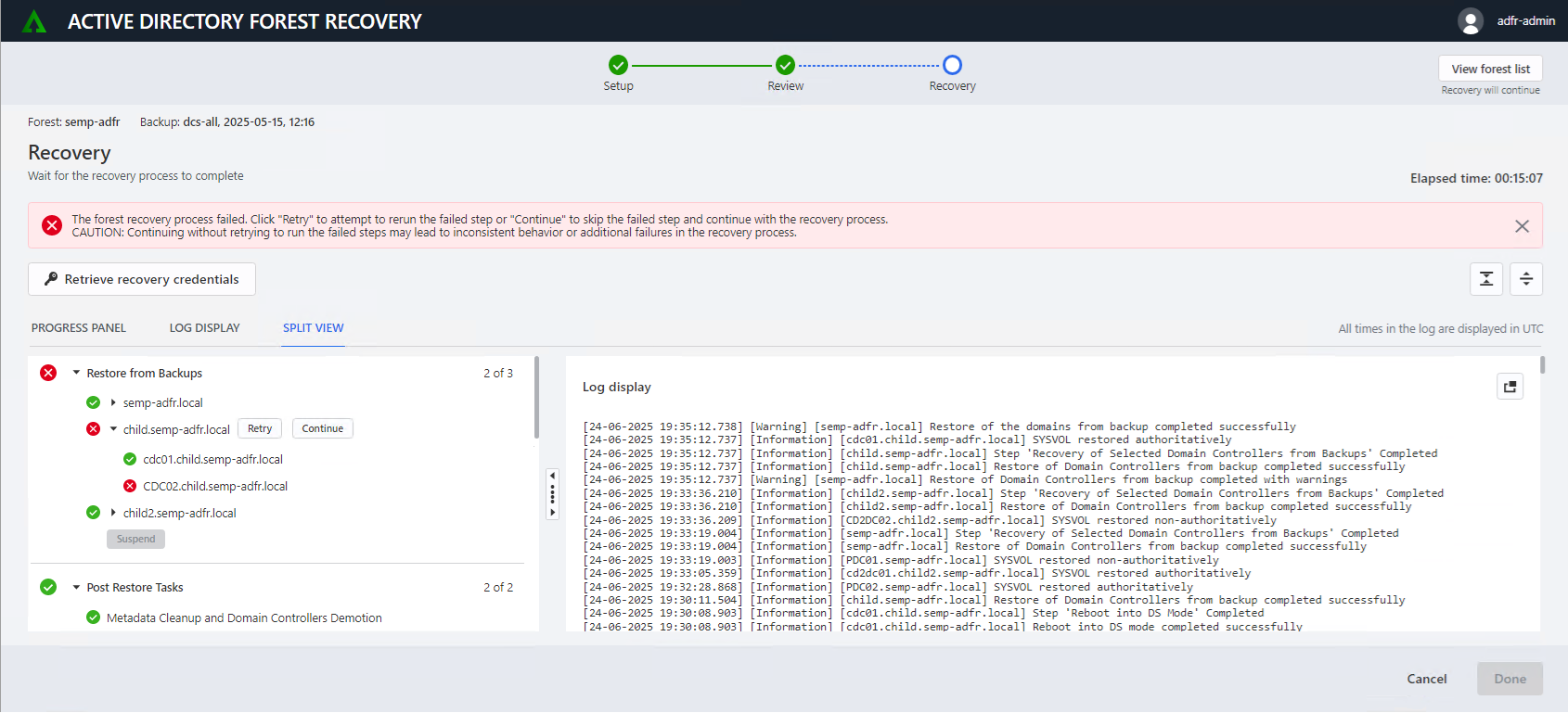
By adopting a flexible recovery approach, Semperis ADFR can switch to an alternative recovery method, allowing the recovery process to continue and the problematic domain controller to be reintroduced into the forest afterward (Figure 4).
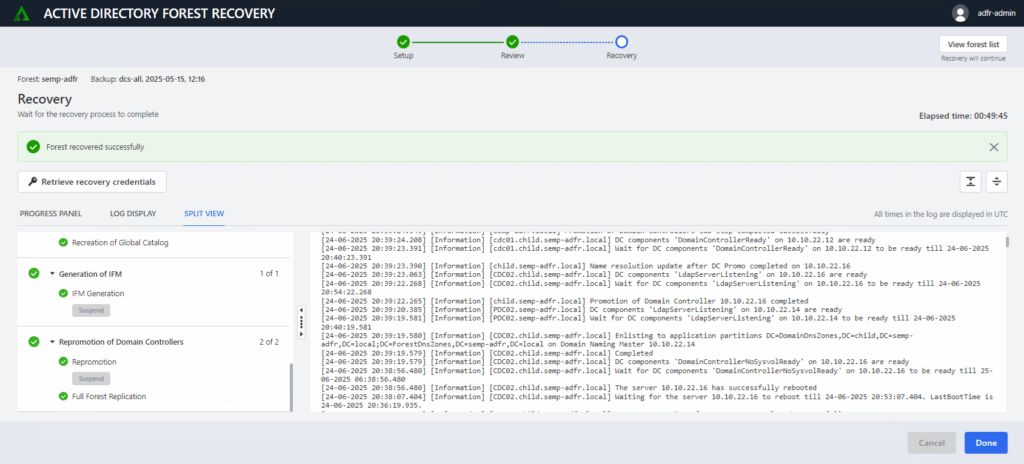
5. Staged recovery
In some cases, it might not be possible or advisable to recover all DCs during the initial phase of recovery. Semperis ADFR staged recovery supports multiple recovery iterations (Figure 5), enabling you to restore critical resources first, then gradually reintroduce additional DCs.
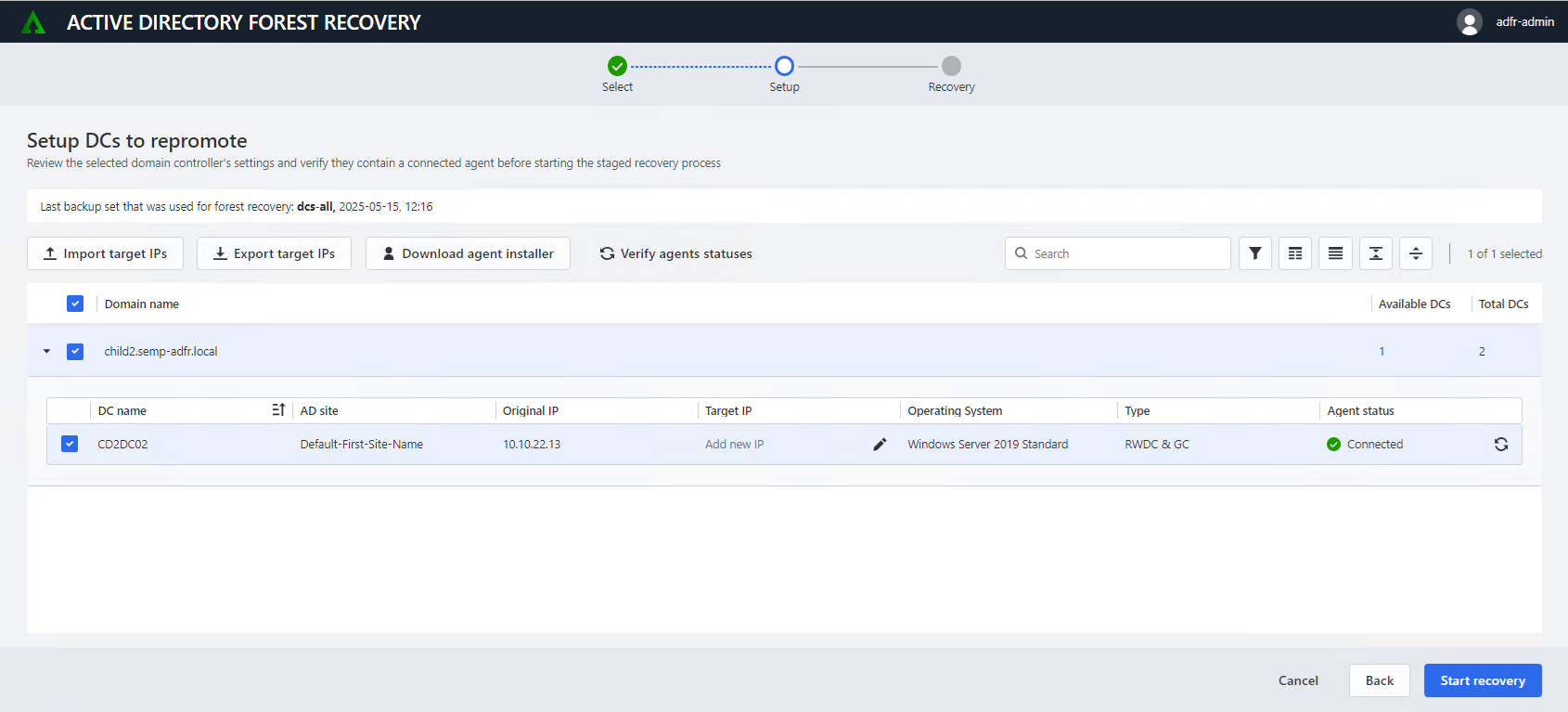
Restore Active Directory to a trusted environment with ADFR
Recovering Active Directory after a cyberattack (Figure 6) involves more than just restoring servers. Semperis ADFR is purpose-built to provide flexible protection and fault-tolerant, malware-free recovery so organizations can not only routinely test their backups but also have confidence in their ability to recover when it matters most.
